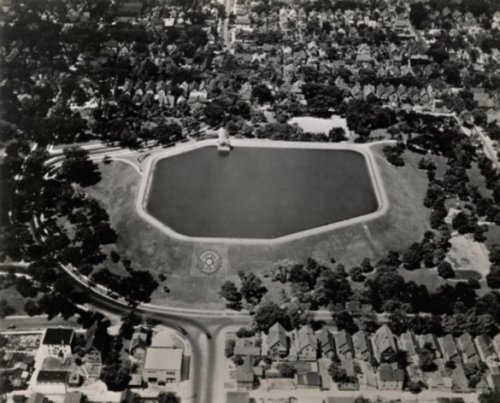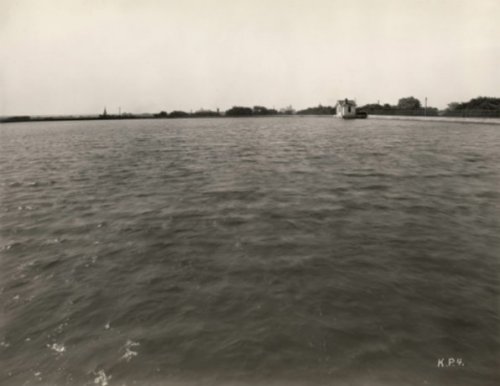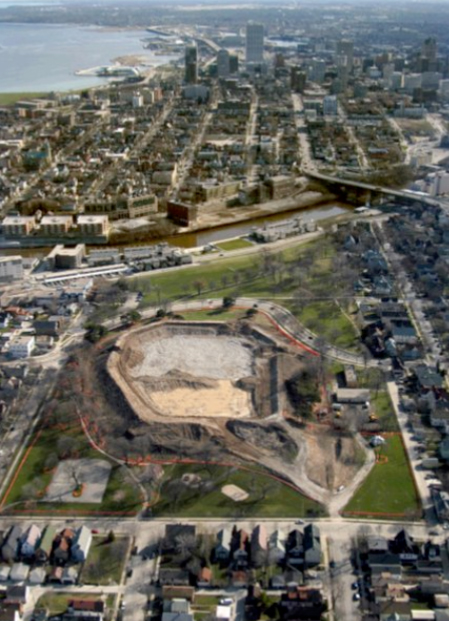During Doors Open Milwaukee last September, the decommissioned Kilbourn Reservoir Pumping Station was opened to curious Milwaukeeans.
The squat yellow brick building, at 626 E. North Ave., which went online in 1957 to help create system pressure required by demands created by the postwar building boom, and was shut down as part of the closing of the reservoir in 2004, may get a new lease on life, it seems.

Milwaukee Water Works Superintendent Jennifer Gonda says that the Colectivo at the Lake, built inside the old river flushing station, could be a model for the Kilbourn Station.
In fact, she says, the old booster station was open during Doors Open Milwaukee in part to generate some interest and discussion of the building.
"I think there’s real opportunity," she tells me as we stand in the main room next to its now-idle pumps. "It could be a catalyst for this area right here. There’s already the softball fields, the park, the music in (Kadish) park."
Some of the ideas that have been floated informally so far, she says, have been ice skating, a coffee shop or a microbrewery.

"There’s space here that would be perfect for a patio," Gonda says of a grassy patch on the east side of the building, upon which a pair of large old wooden doors open.
The Kilbourn Reservoir was built in 1873 on 35.5 acres of land that Milwaukee co-founder Byron Kilbourn donated to the city, with the caveat that it always remain parkland.
The oddly shaped, seven-sided — and 25 foot deep — reservoir could hold 21 million gallons of water that was used for drinking and to supply fire hydrants.

(PHOTOS: Courtesy of Milwaukee Water Works)

It wasn’t until 1979 that the reservoir was covered to protect the water. By then the reservoir had long since become a favorite place for a stroll. The surrounding parkland drew crowds, often for concerts, which were staged from 1905 until 1968.
But over time the reservoir suffered from the pressure caused by the weight of its water and it began to leak, leading to underutilization. By the end it was kept only half-full to ease the stress.
Water is drawn from the lake into the system via the Linnwood Treatment plant, which has two large underground reservoirs. Tunnels supply water to the nearby North Point and Riverside pumping stations for distribution throughout the city.
Roughly a dozen smaller boosting stations help preserve water pressure throughout the vast system, which covers the city but also a handful of suburban customers.
The Kilbourn station pumped water from the reservoir into the system. When it was up and running the reservoir water traveled as far as 20th Street and Oklahoma Avenue.
When the water works decided it had plenty of capacity at its other locations and would close the reservoir in 2004 – after an earlier plan to build a 15-million gallon tank inside the old tank was abandoned – the station was shuttered, too.


Gonda says that, even now, the system has more capacity than is utilized.
The Kilbourn pumping station was designed by the Chicago firm of Alvord, Burdick & Howson, the latter of which, Louis R. Howson, was called Chicago’s "Mr. Waterworks" for his hydraulic and sanitary engineering prowess and influence in the Windy City.
When Howson died in 1985 at the age of 98, the Tribune said he "held his finger in the dike of municipal water problems for more than 70 years. ... Mr. Howson and his firm worked on water challenges that ranged from the water and lighting display of Buckingham Fountain to problems faced by the World Health Organization."
Inside, still in place and connected by hulking transmission pipes are the station’s three original Allis-Chalmers 20-million gallon centrifugal pumps, which you can see in a pair of photographs above.
In a room at the back there’s still the large scale used to weigh out the chlorine that disinfected the water from the reservoir.
In 2006-07, the reservoir tank was removed and the hill was rebuilt with 88,000 cubic yards of soil, creating the roughly 28-acre park we see today (a construction photo at right appears courtesy of Milwaukee Water Works).
Just about the best view of the Downtown skyline can be seen from this perch. Down below there's a playset on the north end and there's plenty of open space for games.

As for the Kilbourn Station at the bottom of the hill, there are some deed restrictions and, of course, the equipment has to be removed, but those are not the building’s biggest challenge, according to Gonda.
"Ironically the biggest issue is that there’s no water service in here," she says. "It’s funny but it’s not connected to a water main."

Still, that isn't dousing the hopes of brining life to Kilbourn Station.
"We will work with the Alderwoman (Milele Coggs) and if she’s on board we will put together and make a marketing plan in 2018," Gonda says. "So it’s safe to say that we are entertaining ideas for the building."
(NOTE: Attempts to reach Ald. Coggs for comment were unsuccessful.)
Born in Brooklyn, N.Y., where he lived until he was 17, Bobby received his BA-Mass Communications from UWM in 1989 and has lived in Walker's Point, Bay View, Enderis Park, South Milwaukee and on the East Side.
He has published three non-fiction books in Italy – including one about an event in Milwaukee history, which was published in the U.S. in autumn 2010. Four more books, all about Milwaukee, have been published by The History Press. A fifth collects Urban Spelunking articles about breweries and maltsters.
With his most recent band, The Yell Leaders, Bobby released four LPs and had a songs featured in episodes of TV's "Party of Five" and "Dawson's Creek," and films in Japan, South America and the U.S. The Yell Leaders were named the best unsigned band in their region by VH-1 as part of its Rock Across America 1998 Tour. Most recently, the band contributed tracks to a UK vinyl/CD tribute to the Redskins and collaborated on a track with Italian novelist Enrico Remmert.
He's produced three installments of the "OMCD" series of local music compilations for OnMilwaukee.com and in 2007 produced a CD of Italian music and poetry.
In 2005, he was awarded the City of Asti's (Italy) Journalism Prize for his work focusing on that area. He has also won awards from the Milwaukee Press Club.
He has been heard on 88Nine Radio Milwaukee talking about his "Urban Spelunking" series of stories, in that station's most popular podcast.





